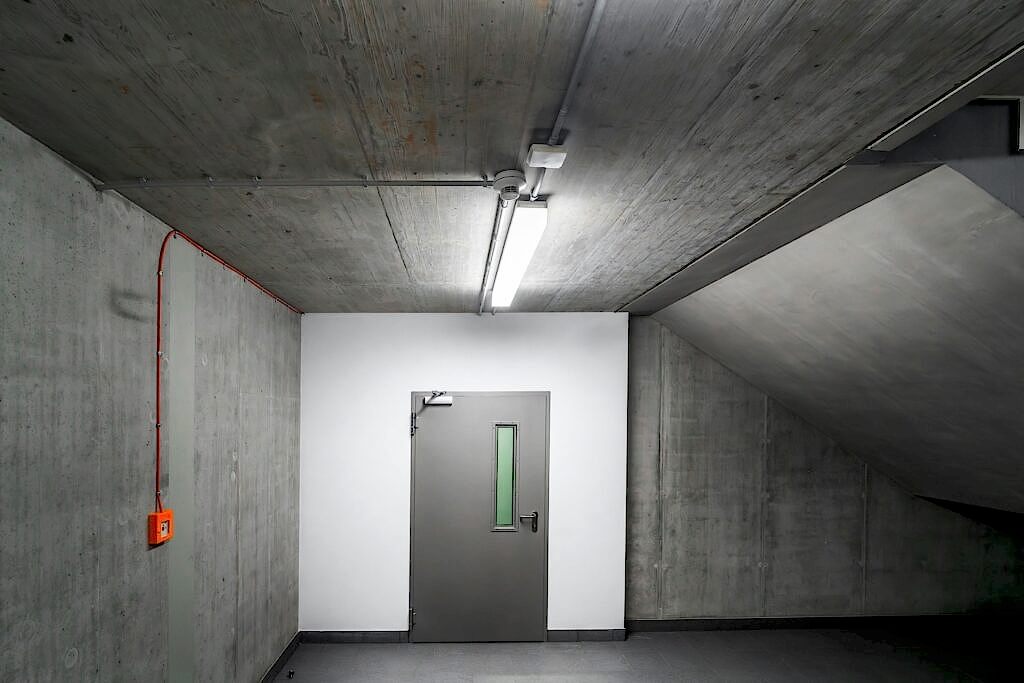
Fire doors play a vital role in the overall fire safety strategy of a building by controlling the spread of both fire and smoke. While they are not intended to extinguish a fire, they are essential in containing it to a specific compartment, helping to delay its progression through a building. This time delay is critical, as it gives occupants the chance to escape and provides firefighters with a safer environment in which to operate.
Understanding the Function of Fire Doors
Fire doors are designed to resist fire and smoke for a set period, typically 30 or 60 minutes, as seen in FD30 and FD60 classifications. In higher-risk settings, longer-rated doors may be needed. Their effectiveness relies on quality materials, proper installation, and fire-rated components to contain fire and smoke within specific areas.
Smoke Containment in Fire Doors
One of the critical roles of a fire door is to prevent the movement of smoke. Smoke inhalation poses a significant threat during a fire, often more so than the flames themselves. Therefore, while the door’s structure helps block fire, its additional features are responsible for stopping smoke leakage.
Smoke seals are key to this function. These are found along the perimeter of the door and may take the form of brush or fin seals. In many fire doors, these are integrated with the intumescent strips that expand under high heat, although in some cases, separate smoke seals are installed, such as batwing seals in the door frame. These barriers block smoke from seeping through gaps around the edges of the door.
The Role of Intumescent Materials
Intumescent materials are integral to a fire door’s construction. Fitted into grooves around the top and sides of the door, intumescent strips expand significantly when exposed to high temperatures. This creates a tight seal between the door and its frame, preventing the passage of both fire and smoke.
The same principle applies to other areas of the door where intumescent products are used. For example, any ironmongery such as locks and handles should be fitted with intumescent pads behind them. In the event of a fire, these pads will expand, helping to maintain the door’s integrity and resistance capabilities.
Other Components That Contribute to Smoke Control
To ensure a fire door performs as intended, every element must work in conjunction with the others. Drop-down seals are commonly used at the base of the door. These mechanisms drop automatically when the door closes, sealing the gap between the door and the floor. When inactive, they remain retracted, avoiding wear or obstruction. However, when the door is in the closed position during a fire, the drop seal prevents smoke from passing underneath.
Door closers are another essential feature. A fire door cannot serve its purpose if left open, so closers ensure that once opened, the door automatically shuts. This action seals off the area and allows the intumescent strips and seals to function properly.
Hinges must also be fire rated, as they bear the door’s weight and are exposed to extreme heat during a fire. These hinges are specifically designed to maintain structural integrity even when under prolonged stress and high temperatures.
Glazing, Grilles, and Identification
In some cases, fire doors are fitted with glazed panels or ventilation grilles. These additions must be made with fire safety in mind. Glazing must be installed using fire-rated glass and glazing tape to preserve the door’s fire resistance. Similarly, any grilles included for air transfer must be intumescent so that they seal shut under heat, ensuring the door continues to perform effectively.
Lastly, fire doors must be clearly marked. Each door should carry a fire door sign on both sides to identify its function. The signs serve as a visual reminder that the door must not be obstructed or propped open.
Ensuring Fire Doors Work as Intended
Fire doors are a vital part of passive fire protection, helping to slow the spread of fire and smoke to safeguard lives and property. Their effectiveness depends on quality materials, well-designed seals and hardware, and correct installation. Regular maintenance and clear signage are essential to ensure they perform as intended.
 Ealing has long been known as one of West London’s most desirable boroughs. With its leafy parks, period properties, and excellent transport links, it’s little surprise that demand for homes here has continued to grow.
Ealing has long been known as one of West London’s most desirable boroughs. With its leafy parks, period properties, and excellent transport links, it’s little surprise that demand for homes here has continued to grow. Property taxes—those pesky pennies that homeowners can’t dodge—are vital yet often bewildering. Unlike that mortgage, which one day bids farewell, property taxes doggedly linger. They demand a spot on your budget year after year. This ongoing duty funds the lifeblood of our communities: schools, emergency responders, roads, and public services.
Property taxes—those pesky pennies that homeowners can’t dodge—are vital yet often bewildering. Unlike that mortgage, which one day bids farewell, property taxes doggedly linger. They demand a spot on your budget year after year. This ongoing duty funds the lifeblood of our communities: schools, emergency responders, roads, and public services. When it comes to choosing a recliner sofa, it’s not just about finding something that looks good in your living room. It’s an investment in your home’s comfort and style. The kind of purchase that can turn a cosy corner into your favourite spot or add a touch of luxury to your space.
When it comes to choosing a recliner sofa, it’s not just about finding something that looks good in your living room. It’s an investment in your home’s comfort and style. The kind of purchase that can turn a cosy corner into your favourite spot or add a touch of luxury to your space. As the cold weather has well and truly set in, we can turn our attention to what pests we are likely to encounter during the remaining winter months and the following warmer months in spring.
As the cold weather has well and truly set in, we can turn our attention to what pests we are likely to encounter during the remaining winter months and the following warmer months in spring. The kitchen has become so much more than a place to prepare meals. It’s now where we gather, entertain, work, and create. This shift has inspired a wave of designs that balance elegance, practicality, and a sense of innovation. Taking cues from the timeless sophistication of
The kitchen has become so much more than a place to prepare meals. It’s now where we gather, entertain, work, and create. This shift has inspired a wave of designs that balance elegance, practicality, and a sense of innovation. Taking cues from the timeless sophistication of  Revamping your home doesn’t need to involve major renovations or a hefty budget. Sometimes, a few clever wall decorations are all it takes to infuse personality, warmth, and a touch of style into your interiors. Whether it’s the timeless charm of
Revamping your home doesn’t need to involve major renovations or a hefty budget. Sometimes, a few clever wall decorations are all it takes to infuse personality, warmth, and a touch of style into your interiors. Whether it’s the timeless charm of  Does your home feel stuck in the past? Perhaps you’ve inherited an older property, or maybe years of the same decor have left your space feeling a bit tired. The good news? You don’t need a full-scale renovation to inject new life into your home. A few smart changes like upgrading your lighting, swapping carpets for hardwood floors, or adding a sleek
Does your home feel stuck in the past? Perhaps you’ve inherited an older property, or maybe years of the same decor have left your space feeling a bit tired. The good news? You don’t need a full-scale renovation to inject new life into your home. A few smart changes like upgrading your lighting, swapping carpets for hardwood floors, or adding a sleek